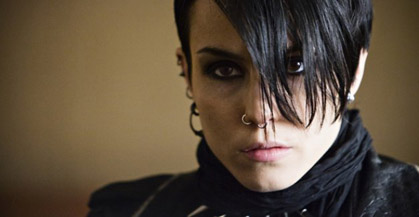|
|
Movie vs. MovieThe Girl With the Dragon TattooBy Tom HousemanJanuary 5, 2012
2. Showdown with Bjurman After her computer breaks, Lisbeth has to go to her newly appointed legal guardian, Nils Bjurman, to ask for money. Bjurman had already shown up in both films before this scene and gave off major creepy vibes, but here he goes beyond what anyone would expect of him. Abusing his position of power over a woman declared incompetent by the courts, Bjurman only agrees to give Lisbeth the money if she blows him. This is the scene when we see Lisbeth at her weakest. She is completely powerless, dependent on this man for not just the money that she needs, but also for her freedom, as one word from him would have her institutionalized. Without saying anything, we see the gears in Lisbeth's head working, and there is a clear distinction between the way Rapace plays this scene and the way Mara does. Mara gives in almost immediately; this is a woman who has lived her life in the system, and understands that it is set up to beat her down and destroy her. Mara's Salander hates what she is going through, but knows that this is what she has to put up with to survive. She has learned by bending she can avoid being broken. Rapace has a very different interpretation of this moment. Her version of Salander is fiercely defiant, and the fire in her eyes makes it clear that she is doing this because she has to, but she still despises Bjurman with every fiber of her being. While Mara put up almost no struggle, Rapace resists so that Bjurman has to grab her by the hair and pull her forward. If Mara is dealing with a quiet despair as she fellates Bjurman, Rapace's emotion would be better described as a silent rage.
|

|
|
|

|
Saturday, April 27, 2024
© 2024 Box Office Prophets, a division of One Of Us, Inc.


